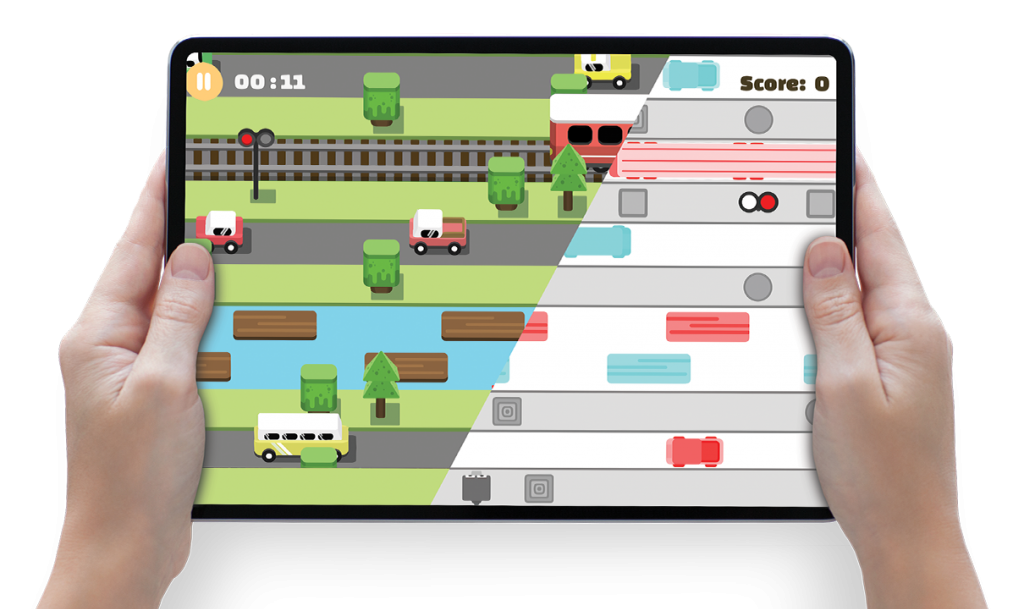Children's Vision

During the early stages of life, the visual system undergoes rapid changes and is the dominant sense which leads to development of perceptual, cognitive and social skills.1 Many vision problems encountered by children are asymptomatic or difficult to recognise.2 A study in 2002 showed that around 25% of primary school-aged children have some form of ocular condition.1 Presently, this number may actually be higher due environmental and lifestyle changes like increased screen time and decreased time outdoors compared with children of previous generations.3-6 Undiagnosed visual problems in children can cause developmental, social and academicchallenges.7 Innovative Eye Care has optometrists at both our Adelaide and Henley Beach practices who are passionate about improving children’s vision and providing high quality paediatric eye care.
See this page for signs that may indicate that your child has a visual problem.

Most schools in Australia offer a form of vision screening which are great tools to detect visual problems. However, most school screenings perform a limited assessment of a child’s visual system. The goals of comprehensive paediatric optometry at Innovative Eye Care are to perform an in-depth assessment of the child’s visual system and its functional status specific to developmental stage, evaluate the child’s ocular health and counsel caregivers about the prevention or management of any visual health concerns that might be present.
A comprehensive eye examination at Innovative Eye Care will assess not only visual acuity but a wide range of components of the visual system including assessment of:
- Eye focusing strength and flexibility
- Eye tracking and movement
- Eye alignment
- Colour vision assessment
- Ocular prescription
- Eye health using advanced imaging technology
With this full scope of assessment, we are able to detect and treat common visual problems in children. This includes amblyopia, strabismus, binocular vision problems and increasingly short-sightedness (also known as myopia).
To find out more about amblyopia therapies, follow this link.
To find out more about myopia control, follow this link.
Contact us to see one of our friendly optometrists regarding a comprehensive children’s vision assessment.
References
1) Atkinson J. The Developing Visual Brain. Oxford University Press UK; 2002.
2) Schmidt P, Maguire M, Dobson V, Quinn G,Ciner E, Cyert L, et al. Comparison of preschool vision screening tests asadministered by licensed eye care professionals in the Vision In PreschoolersStudy. Ophthalmology. 2004 Apr;111(4):637–50.
3) Vitale S, Sperduto RD, Ferris FL. Increased prevalence of myopia in the United States between 1971-1972 and 1999-2004. ArchOphthalmol Chic Ill 1960. 2009 Dec;127(12):1632–9.
4) Ip JM, Rose KA, Morgan IG, Burlutsky G,Mitchell P. Myopia and the urban environment: findings in a sample of12-year-old Australian school children. Invest Ophthalmol Vis Sci. 2008Sep;49(9):3858–63.
5) Lin Z, Vasudevan B, Jhanji V, Mao GY, GaoTY, Wang FH, et al. Near work, outdoor activity, and their association withrefractive error. Optom Vis Sci Off Publ Am Acad Optom. 2014 Apr;91(4):376–82.
6) Saw SM, Hong RZ, Zhang MZ, Fu ZF, Ye M, TanD, et al. Near-work activity and myopia in rural and urban schoolchildren inChina. J Pediatr Ophthalmol Strabismus. 2001 Jun;38(3):149–55.]
7) National Academies of Sciences, Engineering, and Medicine, Health and Medicine Division, Board on Population Health and Public Health Practice, Committee on Public Health Approaches to Reduce Vision Impairment and Promote Eye Health. Making Eye Health a Population Health Imperative: Vision for Tomorrow [Internet]. Welp A, Woodbury RB, McCoyMA, Teutsch SM, editors. Washington (DC): National Academies Press (US); 2016[cited 2019 Dec 19]. (The National Academies Collection: Reports funded by National Institutes of Health).
FAQs
Please browse through some of our most frequently asked questions on this topic.
Speak to our friendly team today
Book your appointment now for personalised eye care tailored just for you.











